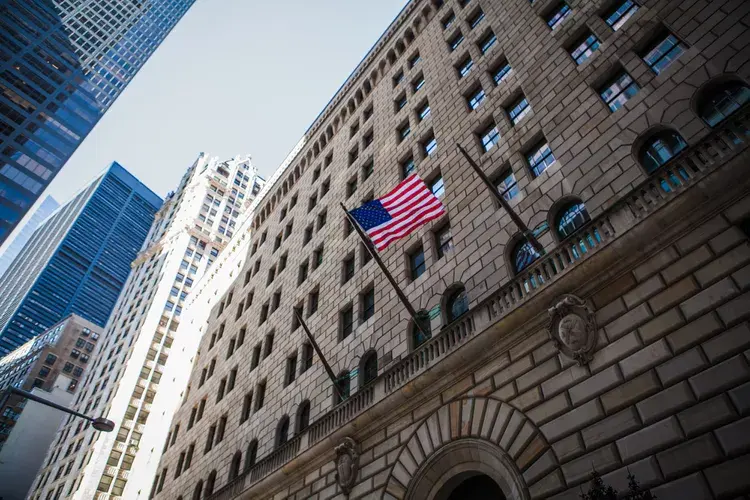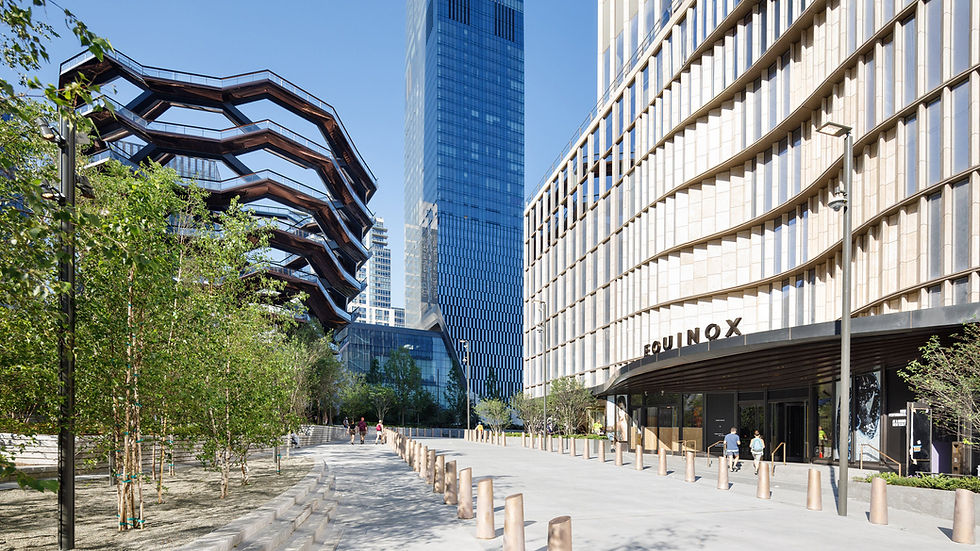Weekly Market Report - March 6, 2023
- Norman Bobrow

- Mar 6, 2023
- 5 min read
***
Commercial real estate values continue to drop, but after a year of rapid interest rate hikes, investment advisory and research firm Green Street says the bottom is close — or already here. Green Street’s Commercial Property Price Index, which tracks all sectors of CRE, is down 14% from its peak reached last March, falling 0.6% from December to January. Core sectors — office, industrial, multifamily and retail — are down 17% from their peak. “Commercial property prices are down about 15% from their peak,” “Most investors would probably agree with that, even if the yearly appraisal of their properties might suggest otherwise. So, while appraisals are likely headed lower, the real-time picture of property pricing shows a market where we’ve either reached bottom or are very close to it.”
The index monitors price points of sale negotiations and contracts in order to track property values. When it comes to asset types, apartment values have taken the biggest hit — down 20% in the last year, the index shows, with a 1% fall in the last month. Malls are also down 20% in the last 12 months, with a 2% month-over-month drop. Office prices are down 17% from their March peak, but their price decline is accelerating with a 4% fall in the last month. Industrial prices are down 15% but haven't fallen at all in the last month.
Rising interest rates have brought sales to a screeching halt. National investment sales were down 63% year-over-year in the fourth quarter. In the country's largest commercial real estate market, Manhattan sales volume in the fourth quarter was $3.3B across 75 sales, representing drops of 12% and 32% from the trailing four-quarter average. Average cap rates rose to 4.97% while the average price per SF on properties is down 11%. Meanwhile, there is significant loan volume maturing in the city, largely in the office market. In total, more than $16B in CMBS loans backed by New York City commercial real estate will mature through 2023.
***
U.S. commercial real estate investment volume fell by 63% year-over-year in Q4 2022 to $128 billion. For the year, volume fell by 17% to $671 billion from 2021's record level but was the second highest on record. Multifamily was the leading sector with $48 billion in Q4 volume, followed by industrial & logistics with $32 billion and office with $19 billion. On a trailing-four-quarter basis, Los Angeles was the top market with $53 billion in volume, followed by New York with $51 billion. Institutional and private investors were net buyers in Q4, while REITs and cross-border investors were net sellers. Inbound cross-border investment decreased by 81% year-over-year in Q4 to $6.2 billion due to the strong U.S. dollar and economic uncertainty.
***
The pain in Manhattan's office market is reverberating out to Long Island City, a market long pitched to tenants as a place to lease a high-end building at a discount. Leasing has slowed across the city, occupancy remains low and some office owners are buckling under a brutal financing environment — and Long Island City is no exception. Vacancy in Class-A buildings in the area was 43.1% at the end of 2022, while overall vacancy hit a new record of 28.6%. Rents fell 7% from the year before, while office take-up was negative 1M SF, a two-year low, according to the brokerage. That nearly half of the high-end space in the market is sitting empty reflects the optimism over a wave of demand investors felt, as evidenced by the flurry of office renovation and development in the area in recent years. But without that robust demand — as well as acute competition coming from sublease space in Manhattan — many owners are operating under a different, much gloomier, scenario than predicted.
Four years ago, however, LIC owners were singing a different tune. Amazon’s decision to put a headquarters in the neighborhood sparked widespread belief there would be voracious demand from auxiliary companies flocking to the area. It was just a few months between Amazon’s November 2018 decision and the firm’s spectacular cancellation on Valentine's Day 2019, but the impact is still being felt to some extent. Average asking rent in Manhattan is still far more expensive than Long Island City, with average prices at $74.93 per SF in Manhattan, versus $46.04 per SF in LIC. But sublease space is often marketed at a significant discount, and there was 23.6M SF of available sublease space in Manhattan at the end of 2022, an all-time record.
Barone Management principal John Silviano said his company's industrial and flex office building, the Woodworks at 9-03 44th Road in Hunters Point, was designed to secure a specific kind of tenant. The building is 83% full, he said, and most of the office tenants have rented industrial space on the ground floor and taken office space on the floors above.
***
Given the tenuous state of the office market plus the nationwide housing shortage, it’s no surprise that office-to-residential conversions have become a hot topic of late. But while such conversions offer many potential benefits to owners and communities alike, the legalities involved in such conversions can seem overwhelming, especially since few developers have extensive experience in this area. Fortunately, the current mood toward conversions favors development in New York City. Developers looking toward conversions are more likely to face issues related to New York State’s Multiple Dwelling Law, which lays out requirements for the physical aspects of the conversion.“The issue with these old offices — let’s call them mid-century and beyond — is that they have these great big floor plates,” said Egnatios-Beene. “And between those and the windows around the perimeter, you’re not going to be able to easily convert them because you’re not going to get enough light and air. But there are lots of solutions to that, and the current regulatory environment allows for it.”
The law, however, which gives developers flexibility in how they handle these factors, currently applies in only some parts of the city. Developers exploring conversion opportunities also need to be concerned about various environmental considerations, including adhering to New York City’s Local Law 97, which places limits on greenhouse gas emissions starting in 2024. To comply with Local Law 97, developers need an accurate assessment of their building’s emissions. This will have a significant impact on any developer now planning an office-to-residential conversion. Another consideration for developers contemplating conversions is whether to stick with rental apartments, choose a condo or co-op structure, or perhaps assemble some combination, such as a condo with retail units downstairs, a rental unit with rental or co-op apartments in the middle, and residential condo units on top.
The condo structure allows for flexibility if the developer wants to sell off some or all of the property down the road. The process of establishing a condo regime would take longer than a straight office-to-apartments conversion, as it involves steps required under New York’s Martin Act (Article 23-A of the General Business Law) and Condominium Act (Article 9-B of the Real Property Law), including obtaining a “no action letter” from the attorney general’s office and recording a condo declaration and floor plans. The sale of individual residential condo (or co-op) units would also require an offering plan. Many office-to-apartment conversions require some form of government subsidy, which in turn requires that the development have an affordable housing component.









Comments